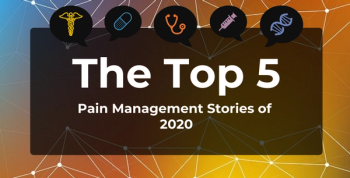
CBT-Based Peer Support Helped Reduce Pain in Rural Alabama
A community-based program helped reduce pain using cognitive behavioral therapy techniques in low-income, primarily Black individuals with coexisting pain and diabetes.
A community-based cognitive behavioral therapy (CBT) program using peer support in low-income, rural Alabama, aimed primarily at Black individuals with diabetes, was effective in reducing
Pain associated with diabetes is complex, but about 50% to 70% of adults with diabetes suffer from chronic pain, the authors said. It may stem from diabetic polyneuropathy (up to 30%) of patients, or from musculoskeletal pain (up to 80%) or from comorbid osteoarthritis.
However, unlike white patients, Black patients, and especially patients in rural areas, have difficulty finding nonpharmacological pain relief. But uncontrolled pain can interfere with self-functioning, like the ability to exercise or maintain a healthy diet, which is critical in diabetes management. Glycemic control may worsen, the authors said, if chronic pain, diabetes, sleep disorders and depression sets in.
In addition, drug therapy for pain, whether opioids, acetaminophen, or nonsteroidal anti‐inflammatory drugs (NSAIDS), may not be suitable or sufficient for patients with diabetes due to risk of overdose, substance use disorder, or renal or liver side effects.
Between 2013 to 2015, a trial called Living Healthy took place in rural Alabama. Researchers recruited 230 patients with diabetes from 8 counties; all had reported pain in the past month. Because of the small, tight-knit nature of these communities, it was not possible to randomize the participants; 96 individuals were placed in the intervention group and 99 were placed in the control arm.
The 195 participants with follow‐up data were aged 59 [10.4] years. Almost all (96%) were African American, 79% were women, and 80% reported pain on the day of baseline data collection.
Ten experienced, trained peer advisors from the same communities were paired with patients and delivered 8 sessions via phone over 12 weeks. Participants also received an activity book, a DVD, and a health calendar. Homework and daily self‐monitoring activities were assigned.
Before each weekly phone session, the participant watched a 15‐ to 30‐minute video related to the current lesson. Each session lasted between 30 and 60 minutes and incorporated healthy eating, physical activity, stress management, communication with health care provider, medication adherence, and social support.
As with CBT, participants were educated about identifying and replacing negative or unhealthy thoughts with positive or healthy thoughts and practicing healthy actions. Through session activities and homework, they self‐monitored mood and pain levels daily. They also used deep breathing and stress reduction techniques, and set and monitored individualized behavioral goals for healthy eating and physical activity. The intervention program ended with 2 sessions aimed at maintaining new activities and skills after the end of the program.
The control group received a peer‐delivered 8‐session general health education program about other topics, such as dementia, breast cancer, and others.
Researchers examined control‐intervention differences in changes in outcome scores from baseline to 3‐month and 12‐month follow‐up, adjusted for clustering. Outcomes included PSE (Arthritis Self‐Efficacy Scale, range 10‐100); pain intensity (McGill Pain Questionnaire, range 0‐45); and PRFL (Western Ontario and McMaster Universities Osteoarthritis Index scale, range 0‐100).
At 3 months, PSE increased more for intervention (21‐point increase) than control (5‐point increase) participants (P < .001);
Pain intensity decreased for both groups.
Only those in the intervention group saw a drop in PRFL (–11 score; P < .001).
The combination of CBT approaches and peer support “may be an effective strategy for pain control among adults with diabetes, without resorting to opioids, especially in areas with limited medical resources,” concluded the authors.
Reference
Khodneva Y, Richman J, Andreae S, Cherrington A, Safford MM. Peer support intervention improves pain-related outcomes among rural adults with diabetes and chronic pain at 12-month follow-up. J Rural Health. Published online March 2, 2020. doi: 10.1111/jrh.12422.
Newsletter
Stay ahead of policy, cost, and value—subscribe to AJMC for expert insights at the intersection of clinical care and health economics.




























































